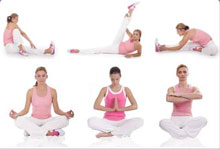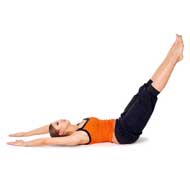- Raja yoga
- Yoga Stretches
- Jivamukti Yoga Poses
- Yoga Tree Pose
- Sun and Moon Yoga
- Wind Removing Pose
- Hare Pose
- Accomplished Pose
- Urdhva Mukha Pinch Mayurasana
- Revolved Abdomen Pose
- Raised Foot Pose
- Scorpion Pose
- Butterfly Pose
- Half Tortoise Pose
- Revolved Twist
- Balancing Stick Pose
- Cat Pose
- Supported Shoulderstand
- Crane Pose
- Handstand
- Happy Baby Pose
- Firefly Pose
- Scale Pose
- Side Plank Pose
- Upward Facing Two-Foot Staff Pose
- Reclining Big Toe Pose
- Stick Pose
- Revolved Head-to-Knee Pose
- Full Boat Pose
- Upward Extended Feet Pose
- Yoga arm balance poses
- Core Yoga
- Inversion Yoga Poses
- Seated And Twist Yoga
- Horse Pose
- Cobbler Pose
- The Compass Pose
- Half Crow Pose
- Bound Half Moon Pose
- Lotus Pose
- Reverse Warrior Pose
- Fixed Firm Pose
- Back-bend Poses
- Forward bend Poses
- Sarvangasana
- Ashtanga Yoga Poses
- Warm up poses
- Seated Poses
- Seated Forward Bends
- Chair Poses
- Standing Poses
- Standing Balancing poses
- Yoga Asanas
- Hatha Yoga Asanas
- Yoga Postures Online
- Partner Yoga Poses
- Anusara Yoga Poses
- Advanced Yoga poses
- Restorative Yoga Poses
- Kids Yoga Poses
- Beginning Yoga Postures
Seated Wide Angle Pose
Yoga is a means to improve the overall health of the body. It is also believed to help link the mind, body, and spirit, and is often recommended as a de-stressing and calming routine.
However, of late, yoga has been recognized as an alternate means for treating and managing health conditions.
The Seated Wide Angle Pose is known as Upavistha Konasana in Sanskrit. ‘Upavistha’ means ‘seated or sitting’, ‘kona’ means ‘angle’ and ‘asana’ means ‘posture or pose’. The Seated Wide Angle Pose opens up the hips and stretches out both the hamstrings, the inner thighs, back, and the shoulders. The pose also improves circulation in the entire pelvic and abdominal areas and is an excellent workout for overall flexibility.
Steps
In order to perform the Seated Wide Angle Pose, you can follow the steps outlined below:
- Sit upright with the legs stretched forward; toes and feet pointing up.
- Separate the legs into a V shape with the knees facing the ceiling.
- Inhale, raise the arms over the head and lengthen the spine.
- Keep the spine straight and bend forward at the hips.
- Move the hands forward between the legs. Then exhale and place the hands in front of you, palms pressing down on the floor.
- Keep the back straight. If possible, try to bring the breast bone parallel to the floor, hold both of the big toes with the index and middle fingers of the respective hands, or hold the outsides of the feet with each hand.
- Contract the abs and thighs and continue to press through the balls of the feet.
- Hold the pose for 10 to 60 seconds
- Repeat 2 to 3 times.
Precautions
The attempt to accomplish the Seated Wide Angle Pose may pose a challenge, especially in the beginning. Beginners may find some annoying hindrances like,
- Pressure in the inner hamstrings.
- Pressure in the hip muscles.
With a regular and a scheduled practice these difficulties will fade away. However, you should avoid the Seated Wide Angle Pose if you have serious lower back injury, a knee injury, or carpal tunnel syndrome.
Beginner’s Tip
A beginner’s tip to help you with this pose is to bend your knees a little. However, you always must keep the toes and knees pointed upwards, towards the ceiling. You could place a bolster or folded blankets beneath the buttocks to make it easier to bend forward. In case of an inability to bring the torso forward towards the floor, lay a thick blanket or a bolster in the front with its axis perpendicular to the pelvis. Exhale, bend forward and place the torso down on the support.
Benefits to Body Parts
The Seated Wide Angle Pose has many benefits to different body part.
- It opens up the hips and stretches the buttocks and spine.
- It stretches the hamstrings, calves, and inner thighs.
- It helps reduce pelvic congestion.
- It stimulates the entire pelvic region, including the ovaries.
- It also tones the spine and strengthens it.
- It stimulates and massages the abdominal organs as well as the prostate, bladder, and reproductive organs.
Therapeutic Applications
- The Seated Wide Angle Pose is beneficial in sciatica relief. The extension of the legs sideways lessens sciatica pain.
- Since the pose stimulates the abdominal organs, it helps prevent flatulence and improves digestion.
- Also, the pose can be applied to relieve menstrual disorders and regulate menstrual flow.
- The Seated Wide Angle Pose can be used to fix a prolapsed bladder and uterus.
- The pose helps in reducing the occurrences of hernia in those who are prone to them.
- The Seated Wide Angle Pose also de-stresses and relaxes the mind.
- It is believed that regularly practicing the pose may help treat infertility, owing to the stimulation of the reproductive organs.
- The Seated Wide Angle Pose is also helpful in arthritis as it promotes flexibility and helps reduce stiffness in the joints.
- The Seated Wide Angle Pose detoxifies the kidneys and helps them to function properly.
Variations to the Seated Wide Angle Pose
Variations to this pose are aimed at either easing the pose or making it more difficult.
- One of the variations to the Seated Wide Angle Pose is to use a yoga strap. This makes the pose easy to perform and can be done by those who find it difficult to hold on to the toes or to the sides of the feet when bending forward. A yoga strap placed on the soles of the feet can ease the strain. Apart from that, the pose is performed in exactly the same manner as mentioned above.
- Another variation to make the pose more challenging for advanced practitioners is to widen the space between feet a little more every time you perform the pose. The more apart your feet are, the more difficult it will be to perform the pose.
Preparatory Poses
There are a few preparatory poses for the Seated Wide Angle Pose, namely:
- The Staff Pose (Dandasana), which helps to strengthen and stretch the muscles of the back.
- The Cobbler Pose (Baddha Konasana), which is another pose that uses the forward bend. This is useful for stretching the spine, thighs, and legs.
- The Goddess Pose (Supta Badhha Konasana), which is a variation of the Cobbler Pose and also serves to stretch the back and spine.
Follow up Poses
Follow up poses for the Seated Wide Angle pose include:
- The Cow Face Pose (Gomukhasana), which stretches out the chest, torso, legs, and arms.
- The Lotus Pose (Padmasana), which is good for the knee joints and ankles. It also massages the spine, pelvis, and abdominal area.
- Easy Pose (Sukhasana), an easier variation to the Lotus Pose, which helps to strengthen the back.
Yoga is a holistic science with multipronged benefits. It works on physical, mental and spiritual levels. Correct and scheduled practice provides perfect harmony and balance to the body and mind. While new research has to some extent verified its many benefits, it is best to consult a yoga professional and practice under guidance so as to avoid injuries and adverse effects.
 Find Pose
Find Pose

